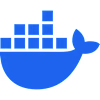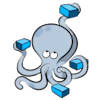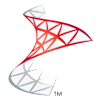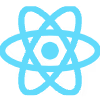
Create Scalable and user friendly web application
Contact for pricing
About this service
Summary
What's included
Project Documentation
1. Requirements Specification: A document detailing the functional and non-functional requirements of the web application. 2. Technical Documentation: Outlines the technologies, architecture, APIs, and system design used in the development. 3. User Documentation: Guides on how users can navigate and utilize the application, including manuals or FAQs. 4. Wireframes/Mockups: Visual representations of the user interface (UI) to give an early look at the layout and flow of the app.
Design Assets
1. UI/UX Designs: Finalized design files including wireframes, color schemes, fonts, and design elements. 2. Responsive Design Implementation: Ensures the application is optimized for various devices and screen sizes (desktop, mobile, tablet). 3. Branding Assets: Logos, icons, and other branding elements to be used in the app.
Source Code
1. Front-End Code: HTML, CSS, JavaScript, and any framework code (e.g., React ) used to build the user interface. 2. Back-End Code: Server-side code (e.g., Node.js, Python, Java) managing the application logic, databases, and APIs. 3. Database Schema: Structured databases including tables, relationships, and any necessary documentation on data models. 4. API Integrations: Documentation and source code for external or internal API integrations used by the application.
Testing Artifacts
1. Unit Tests: Tests that ensure individual components of the code function as expected. 2. Integration Tests: Tests verifying that different parts of the application work well together. 3. User Acceptance Testing (UAT): Feedback from end-users ensuring the application meets business and usability requirements. 4. Automated Test Scripts: For projects that incorporate continuous integration/continuous deployment (CI/CD), automated test scripts help validate code.
Deployment and Hosting Setup
1. Hosting Configuration: Setup for the live environment on cloud platforms (e.g., AWS) or on-premise infrastructure. 2. Continuous Integration/Continuous Deployment (CI/CD) Pipeline: 3. Automated processes for building, testing, and deploying code to different environments. 3. Domain and SSL Setup: Configuration of domain name and SSL certificates for secure communication over the web.
Performance Optimization
1. Performance Reports: Reports on the application’s speed, load times, and resource usage (e.g., CPU, memory). 2. SEO Optimization: Ensuring that the application adheres to best practices for search engine optimization. 3. Security Testing: Penetration testing and vulnerability assessments to ensure the application is secure.
Final Deliverable – The Web Application
1. Fully Functional Web Application: The final, fully functional version of the web application accessible via a live environment. 2. Responsive Design: Ensuring the application is usable across different screen sizes and platforms. 3. Cross-Browser Compatibility: The application works seamlessly on different web browsers (Chrome, Firefox, Safari, etc.)
Post-Launch Support
1. Maintenance Plan: Details on ongoing support and maintenance, including bug fixes, updates, and security patches. 2. Training Sessions: Providing training to the client or end-users on how to use the web application, including administration features. 3. Backup and Recovery Plans: Documentation and implementation of automated backups and recovery mechanisms.
Skills and tools
Industries
More services





